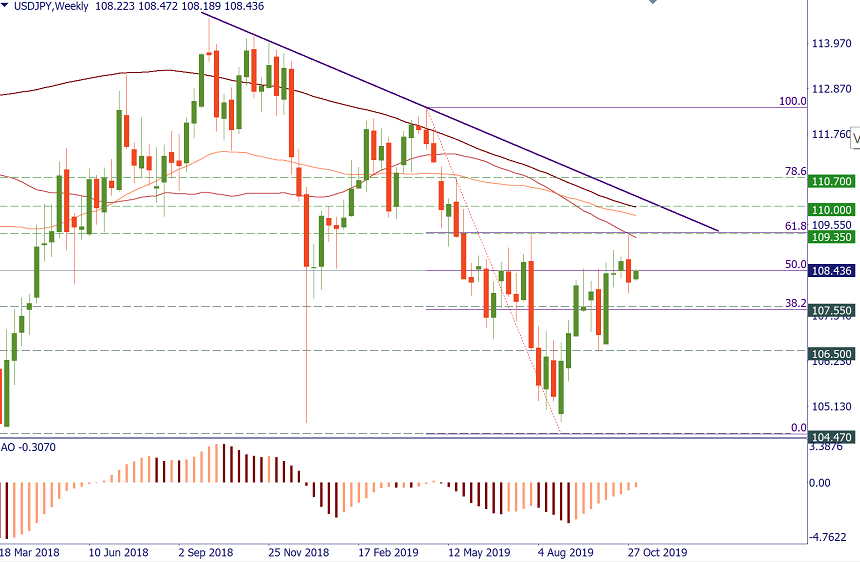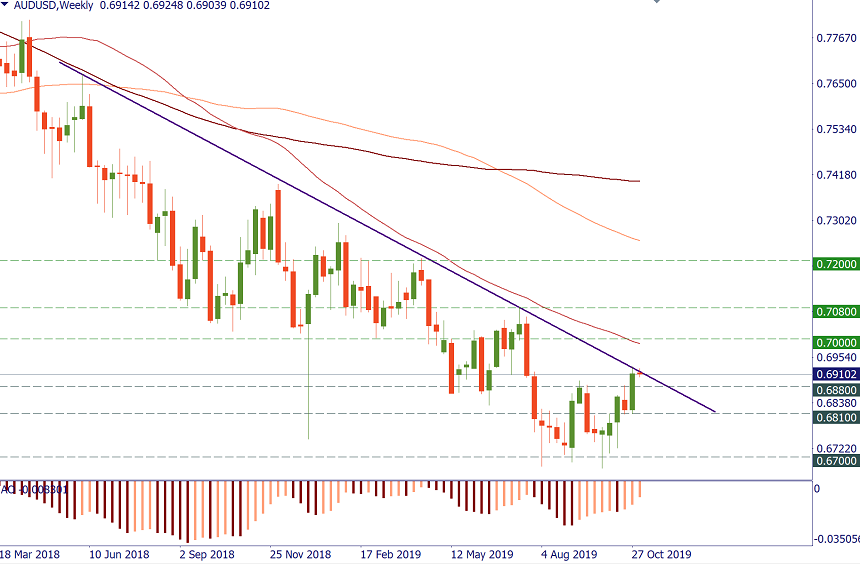
The G20 summit took place in Bali, Indonesia, on November 2022…
For a seamless experience, click “Redirect me.”

Don’t waste your time – keep track of how NFP affects the US dollar!
Data Collection Notice
We maintain a record of your data to run this website. By clicking the button, you agree to our Privacy Policy.

Beginner Forex Book
Your ultimate guide through the world of trading.
Check Your Inbox!
In our email, you will find the Forex 101 book. Just tap the button to get it!
Risk warning: ᏟᖴᎠs are complex instruments and come with a high risk of losing money rapidly due to leverage.
71.43% of retail investor accounts lose money when trading ᏟᖴᎠs with this provider.
You should consider whether you understand how ᏟᖴᎠs work and whether you can afford to take the high risk of losing your money.
Information is not investment advice
Big events like Brexit talks and votes and the Federal Reserve’s meeting came and went. Market players didn’t get spooked much in October. The new month has come and investors are forming new expectations. In this article, we have gathered important information and tips that will ease your navigation through the upcoming events.
News bulletin: key topics
Last month ended with the rising expectations that a hard, no-deal Brexit will be avoided. No big thing took place on October 31 as the European Union extended the Brexit deadline for 3 months. Prime Minister Boris Johnson managed to reach an agreement with the EU and set a general election on December 12. As a result, Britain is finally closer to a Brexit deal than it has been for many months. This scenario will become reality if the Conservative Party wins the election and Johnson forms a majority government. So far, the Conservatives are leading in the opinion polls. Of course, there’s more than a month until the election and things may change. The recent developments will likely provide the GBP with ample support for the next few weeks, but the risk of a hung parliament will limit its upside.
The recent comments from the US and Chinese officials are about the progress in trade talks. There are hints that the parties may sign a deal this month - a so-called ‘phase one’ agreement. Such prospect is surely welcomed by all the risk-sensitive assets, from the S&P 500 to AUD/USD and NZD/USD. Of course, there were many times in 2019 when America and China backpedaled on the deal. Chinese purchases of US farm products still represent an issue. All in all, the disagreements have to be settled by Dec. 15 when a new round of US tariffs on Chinese imports is set to kick in. In the days ahead, higher-yielding assets will still be sensitive to headlines, but as long as there’s still time, traders should be in a more or less positive mood.
Christine Lagarde took over Mario Draghi as the President of the European Central Bank. Earlier Lagarde approved of the loose monetary policy pursued by the regulator. As a result, she is expected to follow the path chosen by her predecessor who has managed to push through a fresh stimulus package during his final weeks in the office. If that’s the case, the upside for the EUR will be limited. At the same time, Lagarde doesn’t have the experience of being an economist or a central banker, so her leadership style will likely be very different from that of Draghi. Lagarde may try to unite the diverging ECB members as well as the divided national governments of the eurozone’s member states. In the longer term, if she succeeds, this will be good for the single currency.
The US economic growth is slowing down: American GDP grew at an annualized rate of 1.9% in the third quarter. The growth rate was lower than 2% for the first time since the fourth quarter of 2018. The boost from the Trump tax cuts is obviously waning, while the manufacturing sector is suffering from the US-China trade war. The ISM manufacturing PMI posted a reading below the key mark of 50 in October - a sign that the industry is contracting. Even the fine data from the labor market failed to improve the sentiment about US economic health. All in all, the US economic performance isn’t great and as long as American figures remain sour, traders will expect more easing from the Federal Reserve. In such an environment, the USD will lose to its counterparts.
Weeks ahead: more from central banks
Central banks always act as beacons for traders. The upcoming weeks offer no exceptions and should provide us with more guidance. Here's what we should look forward to:
Nov. 5 - Reserve Bank of Australia’s Meeting
The Reserve Bank of Australia cut its benchmark rate in October, but the minutes of that meeting said that “policy stimulus might be less effective than past experience suggests”. The likelihood of further interest rate cuts by the RBA this year has fallen after consumer inflation accelerated to 1.7% y/y in Q3 and the US Fed also downplayed the probability of further rate cuts. The absence of dovish action and rhetorics should support the AUD. At the same time, the RBA may not like the recent strengthening of the national currency. Any comments about the AUD being too expensive will be negative for it.
Nov. 7 - Bank of England’s Meeting; BOE Gov Carney Speaks
No action is expected from the Bank of England until some clarity appears on the Brexit front. Still, traders will be eager to know how the central bank estimates the ability of the domestic economy to sustain the uncertainty. A hint that a rate cut may be necessary will affect the GBP.
Nov. 13 - Reserve Bank of New Zealand’s Meeting
Analysts expected the Reserve Bank of New Zealand to cut its rate in November after data last month showed that inflation fell to 1.5% in the year to end-September from 1.7% previously. Then, however, the expectations started shifting towards the absence of a rate cut: despite the subdued economic growth and weak business confidence, the outlook and employment have improved somewhat during the recent months. Against this background, there will be an element of surprise to the meeting’s outcome that, in turn, means volatility for the NZD.
Nov. 20 - FOMC Meeting Minutes
In October, the Federal Reserve cut its benchmark interest rate for the third straight meeting to between 1.5% and 1.75% and signaled that it may pause before further changes to monetary policy to see whether these easing steps are enough to sustain the economic expansion. Traders will study the meeting minutes with great attention in order to finetune their expectations for December Fed’s meeting as well as their bets on what the central bank does in 2020. The USD has suffered since the meeting, so less dovish and more hawkish wording of the minutes will provide it with some help. On the contrary, if the Fed members stick to the cautious approach and lean to the thought that they might have to do more to avert the potential recession, the greenback will be affected even more.
Time of the charts
EUR/USD. EUR/USD recovered from 1.09 to 1.1150 in October. The pair is giving a serious test to the resistance line from 2018 highs. Still, there are more obstacles on the upside: 50-week MA at 1.1230, 50-month MA at 1.1320, 200-week MA at 1.1355. The EUR lacks the fundamental strength of its own that’s why the recoveries are rather difficult. Support lies at 1.1070 (Oct. 25 low) and 1.1040 (50-day MA).

GBP/USD. GBP/USD moved higher in October but ran into resistance in the 1.30 area. The further obstacles on the upside are at 1.3080 (100-week MA), 1.3135 (200-week MA, and 1.3170 (50% Fibo retracement of the April-September decline). Support lies in the 1.2730/00 area (50-week MA, previous resistance line). Only a return below this are will revive bears. The next important support is around 1.2500.

USD/JPY. Although USD/JPY had a strong start of October, it ran into a bunch of resistance in the 109.25/35 area (61.8% of April-October decline, 200-day MA, 50-week MA). Further obstacles lie at 109.77 and 110.00 (100- and 200-week MAs). These are serious technical levels. To break above them, the USD needs a fundamental driver (a breakthrough in trade talks, hawkish comments of the Fed). Support is located around 107.55 (100-day MA) and 106.50 (October lows).

AUD/USD. AUD/USD managed to turn up from the multiyear lows in the 0.6700 area. The key level on the upside is at 0.70, just above the 50-week MA. If the pair moves above this point, the RBA may not like it much. The next resistance level is at 0.7080 (July high). Remember that although technical picture improved, the long-term downtrend may still represent the dominant power. On the downside, support is at 0.6880, 0.6810 and 0.6700.

Good luck with your trading! Follow us on Facebook and Telegram for more updates!

The G20 summit took place in Bali, Indonesia, on November 2022…

The deafening news shocked the whole world yesterday: the British Queen Elizabeth II died peacefully at the age of 96…

After months of pressure from the White House, Saudi Arabia relented and agreed with other OPEC+ members to increase production.

eurusd-is-falling-what-to-expect-from-the-future-price-movement

Greetings, fellow forex traders! Exciting news for those with an eye on the Australian market - the upcoming interest rate decision could be good news for Aussies looking to refinance or take out new loans. The Mortgage and Finance Association Australia CEO, Anja Pannek, has...

Hold onto your hats, folks! The Japanese yen took a nosedive after the Bank of Japan (BOJ) left its ultra-loose policy settings unchanged, including its closely watched yield curve control (YCC) policy. But wait, there's more! The BOJ also removed its forward guidance, which had previously pledged to keep interest rates at current or lower levels. So, what's the scoop? Market expectations had been subdued going into the meeting, but some were still hoping for tweaks to the forward guidance to prepare for an eventual exit from the bank's massive stimulus
Your request is accepted.
We will call you at the time interval that you chose
Next callback request for this phone number will be available in 00:30:00
If you have an urgent issue please contact us via
Live chat
Internal error. Please try again later